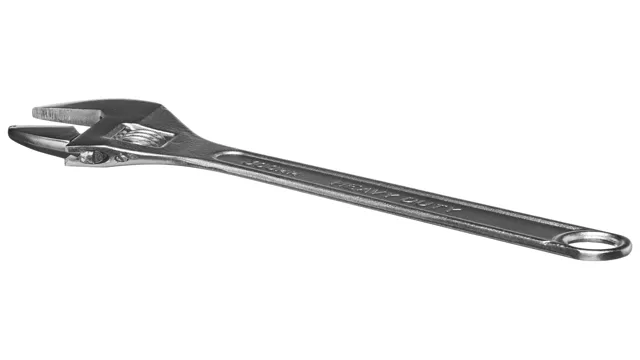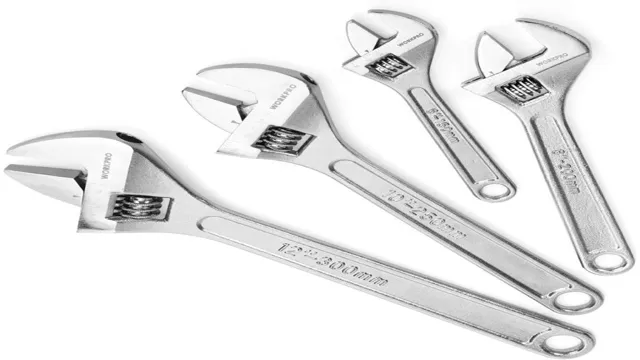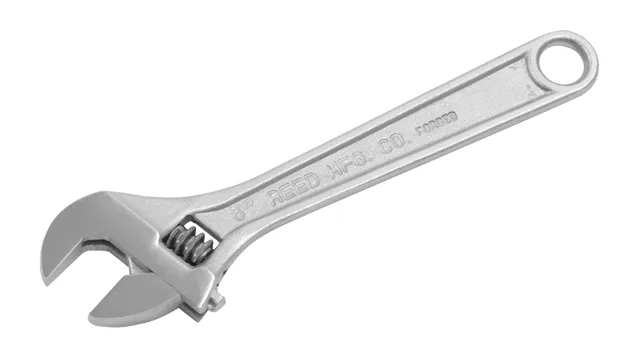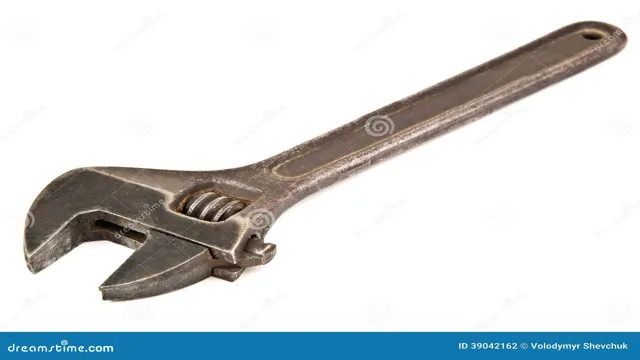How to Use Adjustable Torque Wrench Like a Pro: Tips and Tricks
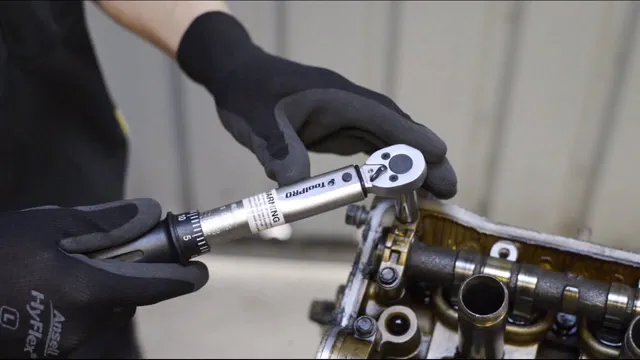
Have you ever found yourself overtightening or undertightening bolts on your car or machinery? These kind of errors can potentially lead to accidents and injuries, not to mention cause damage to your equipment. Fortunately, using an adjustable torque wrench can help you avoid such situations. An adjustable torque wrench is a tool that allows you to tighten bolts to a precise amount of torque, preventing you from overtightening or undertightening them.
This type of wrench is particularly useful for tasks that require exact specifications, such as auto repair, construction, and aerospace engineering. In this blog post, we’ll explore the benefits of using an adjustable torque wrench, how to use one properly, and some tips to keep in mind while working with one. Whether you’re a professional mechanic or a DIY enthusiast, understanding how to use an adjustable torque wrench can help you get the job done safely and effectively.
So, let’s dive in and learn more!
What is an adjustable torque wrench?
An adjustable torque wrench is a tool that allows you to set a specific level of torque for tightening bolts and nuts. This feature makes it an essential tool for mechanics, engineers, and DIY enthusiasts alike. To use an adjustable torque wrench, you need to first determine the required torque level for the particular application you’re working on.
Then, adjust the wrench to that level by turning the handle to the appropriate setting. Once set, apply the wrench to the bolt or nut and turn it until you hear a click or feel a slight release of tension, indicating that the desired torque has been reached. It’s recommended that you always check the manufacturer’s instructions to ensure that you’re using the wrench correctly and safely.
With an adjustable torque wrench, you can achieve precise and accurate tightening every time, ensuring that your bolts and nuts aren’t under or over-tightened.
Explanation of tool and how it works
An adjustable torque wrench is a specialized tool used for tightening nuts and bolts to a specific torque value. It allows the user to adjust the level of force applied to the fastener, ensuring that it is tightened to the manufacturer’s recommended specifications. This type of wrench is essential in preventing under or over tightening, which can cause costly damage to equipment or looseness leading to potential safety hazards.
An adjustable torque wrench consists of a calibrated handle or digital display that shows the levels of force being applied to the fastener, and the user can adjust that force as needed. It can be a lifesaver for mechanics, technicians, and DIY enthusiasts who want to do their repairs safely and accurately. So, if you want to prevent costly mistakes, invest in an adjustable torque wrench and say goodbye to guesswork!
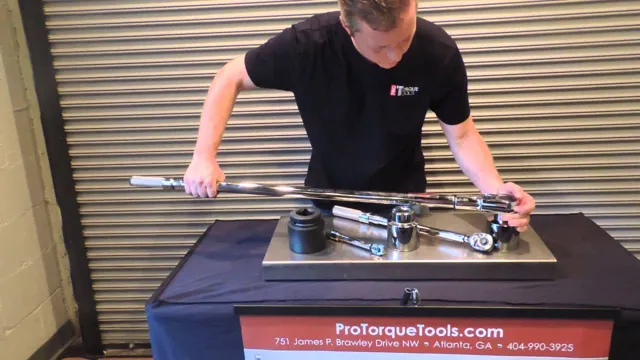
Selecting the right torque setting
If you’re working on a project that requires the use of an adjustable torque wrench, it’s important to know how to select the right torque setting. First, you’ll need to refer to the manufacturer’s instructions for the specific tool you’re using. These instructions should give you the recommended torque settings for the project you’re working on.
Once you have this information, you’ll need to adjust your torque wrench accordingly. One thing to keep in mind is that different fasteners may require different torque settings, even if they’re similar in size and composition. Make sure you’re using the correct setting for each individual fastener to prevent damage or overtightening.
With practice and attention to detail, you’ll become adept at selecting the right torque setting every time you use an adjustable torque wrench.
Factors to consider when selecting torque setting
When it comes to selecting the right torque setting for your application, there are several factors to consider. Firstly, the type of fastener you are using is crucial. Different types of fasteners require different torque settings, so it is essential to check the manufacturer’s recommendations before tightening them.
Secondly, consider the material being used. Soft materials, such as plastics or aluminum, require lower torque settings compared to hard materials like steel or titanium. Additionally, the size of the fastener matters as larger fasteners often require higher torque settings.
Lastly, it is critical to consider the environment and the intended use of the fastener. Factors such as vibration or exposure to extreme temperatures can affect the ideal torque setting. By taking these factors into account, you can ensure that you select the appropriate torque setting for your application, resulting in secure and reliable connections.
Remember, using the right torque setting is essential for ensuring consistent performance while prolonging the life of the fastener.
How to read the torque setting on the wrench
When it comes to using a torque wrench, selecting the right torque setting is crucial. But how exactly do you read the torque setting on the wrench? First, you need to familiarize yourself with the types of torque wrenches available and their corresponding torque measurement units. Some wrenches are calibrated in foot-pounds, while others are in Newton-meters or inch-pounds.
Once you have identified the appropriate unit of measurement, it’s time to set the desired torque level. Look for the torque adjustment handle on the wrench, usually located near the head. Then, turn the handle clockwise or counterclockwise until the torque level aligns with the indicator on the wrench body.
It’s essential to note that torque wrenches have a limit on how much force they can apply, known as the “maximum torque capacity.” Always check the wrench’s maximum torque capacity before using it to ensure that it can handle the amount of force required for your specific task. Reading the torque setting on a wrench may seem intimidating at first, but with practice, you’ll get the hang of it.
Remember to select the appropriate torque unit and set the right amount of force within the wrench’s maximum torque capacity. By doing so, you’ll ensure that your fasteners are tightened correctly and avoid any potential damage or accidents. Keyword: torque wrench
Using the wrench for tightening
If you’ve purchased an adjustable torque wrench, congratulations – you’ve made a smart investment! But do you know how to use it properly? It’s crucial to the safety and functionality of your equipment that you use it correctly. To start, you must first adjust it to the torque settings recommended for your specific job. Then, hold the handle securely and line up the square drive end with the nut or bolt you want to tighten.
Slowly apply force until you hear or feel a click. This click means the wrench has reached the torque setting you’ve selected. Do not continue to turn the wrench, as this could damage the bolt or nut.
If you need to tighten further, start the process over until you reach the desired torque. By using your adjustable torque wrench correctly, you can prevent over-tightening or under-tightening, ensuring your equipment operates efficiently and safely.
Prepping the tool for use
Prepping your wrench properly before use is crucial for getting the best results and ensuring safety. Firstly, check the wrench for any signs of damage or wear and tear before you start working on your project. It’s imperative that the wrench is in good condition to prevent accidents or injuries while using it.
Secondly, ensure that your work area is clear of any obstacles or clutter that could hinder your movements. This way, you can comfortably use the wrench without any distractions. Lastly, adjust the wrench to the correct size for the job you are about to undertake.
This will prevent the wrench from slipping or causing damage to your equipment. By following these simple steps, you will have a well-prepped and efficient wrench ready for use whenever you need it.
Techniques for proper use
When it comes to using a wrench for tightening, it’s important to know the proper technique to avoid damaging the tool or the material you’re working on. Start by choosing the right size wrench for the job, as using a wrench that’s too small or too large can cause slippage or deformation. Once you’ve got the right size, position the wrench at a 90-degree angle to the bolt or nut you’re tightening.
This will give you the best leverage and help prevent the wrench from slipping off. Use your dominant hand to apply pressure while your other hand stabilizes the wrench. Remember to apply pressure gradually rather than all at once to avoid sudden bursts of force that could damage the material.
Use the wrench to turn in the direction needed, whether clockwise or counterclockwise, until the bolt or nut is securely tightened. By following these techniques, you can ensure your wrench is used properly and effectively for all your tightening needs.
How to maintain the wrench for longer lifespan
If you want your wrench to last for a long time, it’s important to use it properly when tightening bolts or nuts. When using a wrench, make sure to grip it firmly and apply pressure evenly to avoid damaging the tool or the fastener. Also, try to avoid using the wrench as a hammer or using it to pry things apart.
This can cause the wrench to become misaligned and make it less effective over time. When you are finished using the wrench, make sure to clean it thoroughly and store it in a dry and secure place. With proper use and maintenance, your wrench can last for many years to come.
So always remember, treat your wrench with care, and it will return the favor by providing you with precision tightening for any job.
Conclusion
In conclusion, the adjustable torque wrench is a powerful tool that allows you to tighten bolts to specific torque settings without the fear of over-tightening or damaging the fastener. The savvy mechanic knows that using a torque wrench is the key to maintaining the longevity and safety of their vehicle. So, skip the guesswork and give your arms a break – invest in an adjustable torque wrench today and tighten your bolts like a pro! Remember, with great torque comes great responsibility.
“
Summary of key points
When it comes to using a wrench for tightening, there are a few key points to keep in mind. First, make sure you have the right size wrench to fit the nut or bolt you’ll be working on. Trying to use the wrong size wrench can damage both the bolt and the wrench itself.
Second, position the wrench so that you’re turning it in the direction that tightens the nut or bolt. This may involve some trial and error, but once you get the hang of it, you’ll be able to work quickly and efficiently. Finally, use firm but controlled pressure to tighten the nut or bolt.
You don’t want to tighten it too much and risk damaging the surrounding equipment, but you also don’t want it to be so loose that it could come undone on its own. By following these tips, you can use a wrench for tightening with confidence and accuracy. Remember to always wear appropriate safety gear and consult an expert if you’re unsure about any aspect of the process.
Tips for beginners
As a beginner, using a wrench for tightening can seem like a daunting task. However, it’s not as complicated as it seems. Firstly, ensure that you have the right size wrench for the job at hand.
Using the wrong size will not only damage the bolt or nut but also the wrench itself. Secondly, position the wrench over the nut or bolt, making sure that it fits snugly and securely. Now, turn the wrench in the clockwise direction to tighten the nut or bolt.
Be careful not to over-tighten, which can cause damage to the fastener, the tool or even the structure being secured. Practice makes perfect, so keep honing your skills until you’re a pro in the art of wrenching.
FAQs
What is an adjustable torque wrench?
An adjustable torque wrench is a tool used to apply a specific amount of torque to a fastener, bolt, or nut.
How does an adjustable torque wrench work?
Adjustable torque wrenches work by allowing the user to set the desired torque value, which is then applied to the fastener. Once the desired torque level is reached, the wrench will make a clicking sound to alert the user to stop applying force.
How do I choose the right adjustable torque wrench?
The right adjustable torque wrench for you will depend on the specific applications you plan to use it for. Look for a wrench with a wide torque range, good accuracy, and a comfortable grip.
Do I need to calibrate my adjustable torque wrench?
Yes, it is important to calibrate your adjustable torque wrench periodically to ensure it is still accurately applying the desired torque level. Most manufacturers recommend calibration once a year or after a certain number of uses.
Can I use an adjustable torque wrench for both tightening and loosening bolts?
Yes, adjustable torque wrenches can be used for both tightening and loosening bolts. Simply set the desired torque level and use it in the same way you would use a regular wrench or ratchet.
Can I use an adjustable torque wrench on any type of fastener?
Adjustable torque wrenches can be used on most types of fasteners, including bolts, nuts, and screws. However, it is important to make sure the size and shape of the wrench head matches the fastener you are using it on.
Are adjustable torque wrenches expensive?
The cost of adjustable torque wrenches can vary greatly depending on the quality, brand, and features. However, there are many affordable options available for home use.

